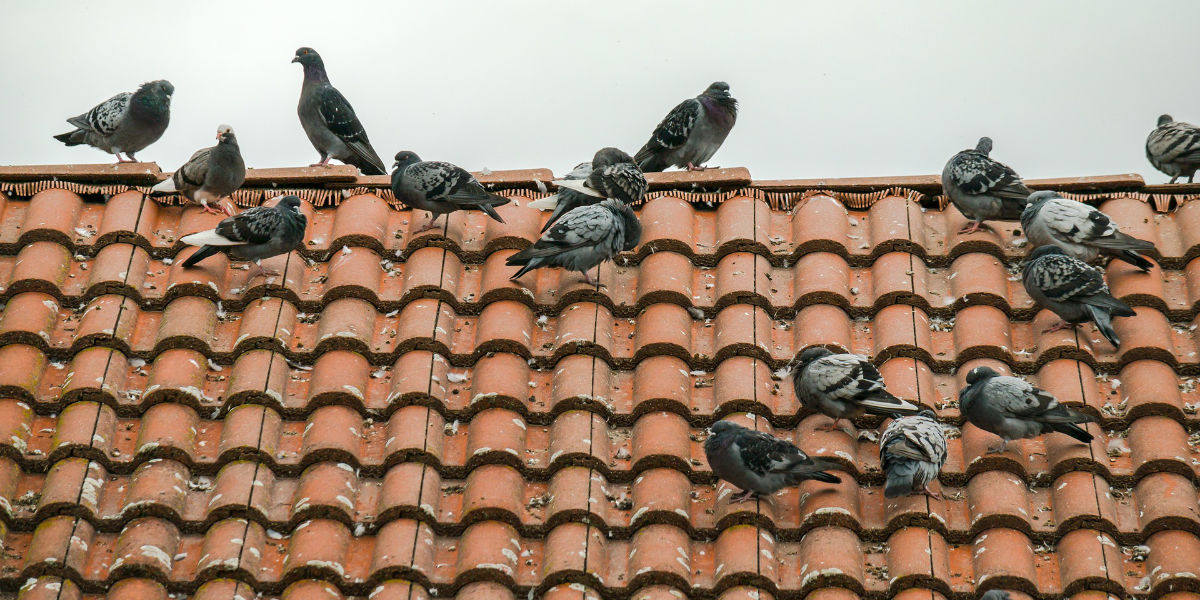How to Prevent and Get Rid of Bird Mites

Here at Pest Defence Ltd, we are often asked to identify lesser-known insect species which have been found in the home. One of these is the bird mite – also known as pigeon mites, red mites and bird lice – which can be mistaken for bed bugs. They do pose a risk to humans and are certainly an unwelcome presence in the home, so read on for our advice on what to do if you think you may have a bird mite infestation.
Have You Found A Bird Mite Bite On Your Body?
Bird mites are tiny creatures that can cause a lot of anxiety and stress
What are bird mites?
‘Bird mites’ is the collective name for several types of mites for which the main food source comes from chicks being reared in nests. So what do bird mites look like? These tiny insects measure less than 1mm in size, and are translucent white until they have digested a blood meal, after which they turn a reddish brown colour. Although they mainly feed on birds in the outdoors, they may make their way into homes if they lack a food source.
Where do bird mites come from?

Bird mites are usually found near the nesting areas of pigeons and other birds but may enter the home in search of a new food source once their existing one is depleted. Often when they enter homes it is due to an existing problem with birds nesting in lofts, chimneys, eaves, window ledges or balconies. Solar panels provide the perfect sheltered nesting area for pigeons, so homes with these installed are susceptible to bird mites entering through the roof.
Where do bird mites hide?
Bird mites are drawn to warm and moist conditions. In the home, they are often found around windows and at ceiling junctions, or in bedding, in search of a blood meal. Naturally they tend to be found in homes that birds are nesting in or near. They are most active during spring and early summer, when bird nests are prolific.
How do you know if you have bird mites?
Signs of bird mites can be hard to come by as they are often low in numbers and are very small. You may see tiny red dots moving around your walls, ceiling and bed, or you may experience itchy bites.
Birds are, of course, the preferred food source of bird mites, and they cannot survive longer than three weeks without this. Whilst on the hunt for a new food source, however, they may resort to feeding off mammals, including humans. Female bird mites may bite any part of the body, and these usually appear as swollen/raised red bumps which unfortunately can be hard to distinguish from bed bug bites. These bites do not spread disease or cause illness but are an annoyance and may irritate skin.
How to prevent bird mites

It’s important to tackle the root cause of the problem and address bird activity around your home. If you have solar panels, you can have them pigeon-proofed by specialists as an easy way of preventing bird mites. If pigeons, starlings and sparrows are nesting nearby, then you can make your home less appealing for them by taking advantage of bird control solutions. Here at Pest Defence we offer various humane methods of bird pest control.
How to get rid of bird mites
If you think you have bird mites in the house, the first step is to get this confirmed by a professional who can then locate the source of the infestation and take the necessary actions to eradicate it. This will typically involve the removal of the birds’ nest causing the problem, and the application of an approved insecticide. Other potentially infested areas will also be given an effective bird mite treatment to eradicate any that have migrated. This process is much more effective than attempting to tackle the problem with home remedies which do not guarantee complete removal of the infestation and do not necessarily get to the root of the problem.
Bird mite FAQs

Where do bird mites live?
Bird mites are associated with moist, humid conditions and are found around nesting areas and poultry houses. If they move into living spaces they are commonly found climbing on walls and ceilings, as well as in bedding.
Can humans get bird mites?
Although bird mites may bite humans they do not live on us and will drop off after feeding.
Do bird mites go under the skin?
No – unlike scabies mites, bird mites do not live on the skin or burrow into it.
Can bird mites live on clothes?
Bird mites do not live on humans but if there is an infestation that comes into contact with clothing they may inadvertently ‘hitchhike’ when said clothing is moved around the house.
What does a mite bite look like on a human?
Bird mite bites usually present as raised red bumps which may cause skin irritation. They are similar bites from bed bugs and other mites which often makes it hard to identify the source.
How do you treat bird mite bites?
An anti-itch cream or lotion may reduce irritation caused by bird mites. Bites are annoying but are not harmful and do not spread disease.
What is the life cycle of bird mites?
The life cycle of a bird mite comprises of four stages: egg, larvae, nymph, adult. They mature from eggs to adults within a week, and adults live for approximately 90 days.
Here at Pest Defence, our fully-qualified team have the knowledge and experience to identify and eliminate infestations, giving you peace of mind that your home is pest-free and hygienic. If you would like to enquire about our pest and bird control services, don’t hesitate to contact us today.
